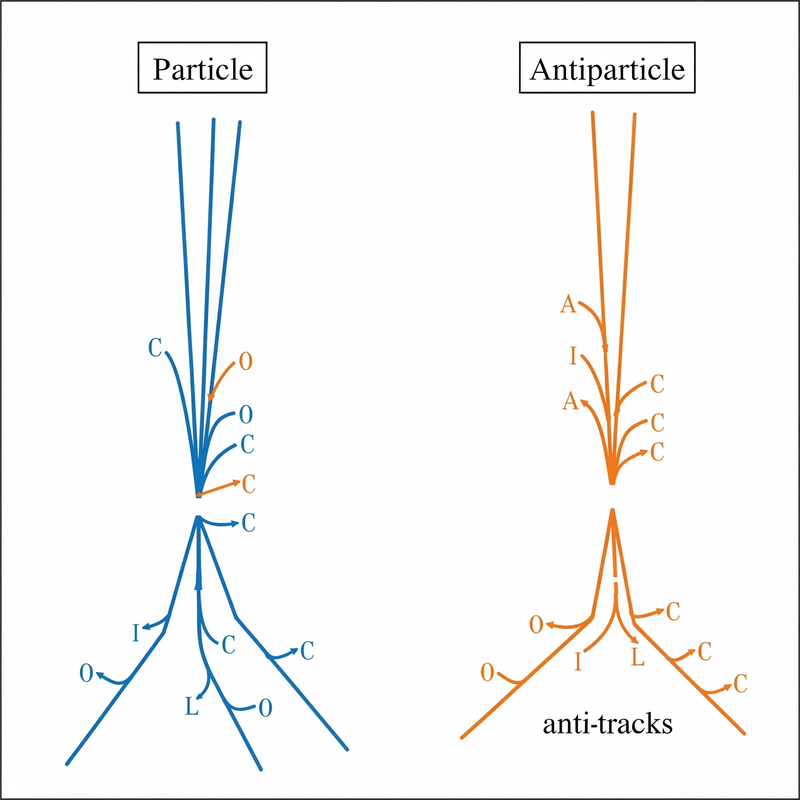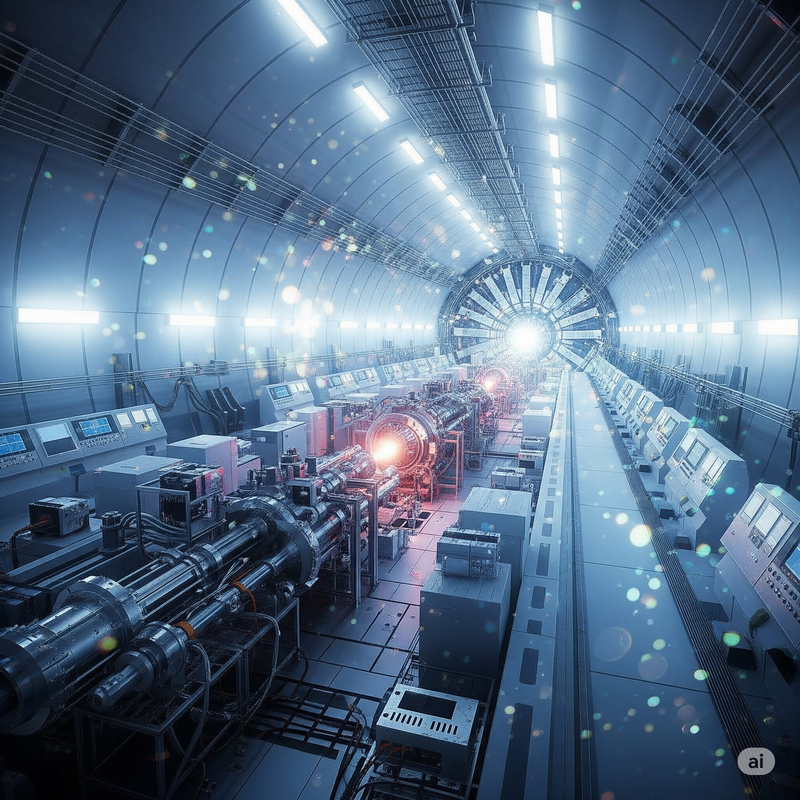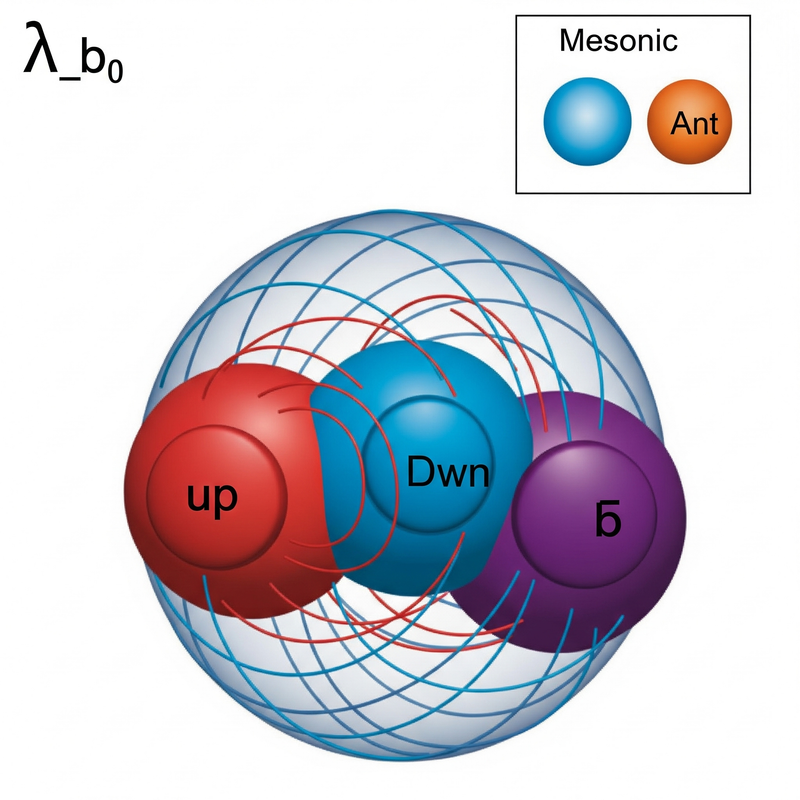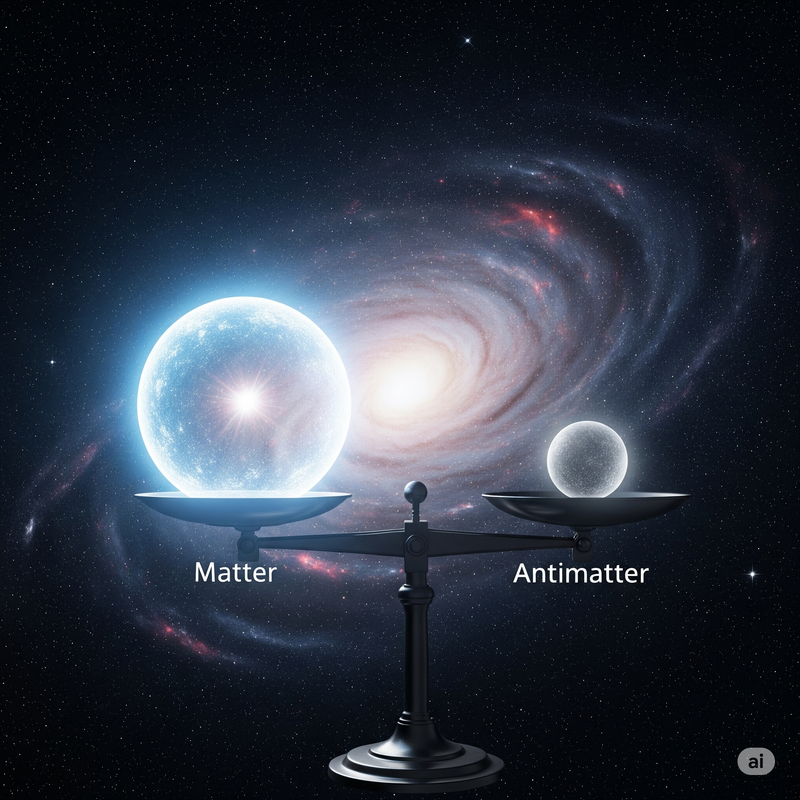Science research on cp violation report
Unveiling the Mystery of Existence: Charge-Parity Violation in Baryons
Published on: May 21, 2025 | Written by Science by Rao

Figure 1: Illustration related to advanced particle physics research, reminiscent of experiments conducted at CERN.
Abstract: A groundbreaking discovery at CERN's Large Hadron Collider (LHC) has provided a crucial new piece in one of cosmology's greatest puzzles: the perplexing dominance of matter over antimatter in the universe. For the first time, scientists have observed **charge-parity (CP) violation** in the decay of the **beauty-lambda baryon**. This phenomenon, previously confirmed only in lighter particles called mesons, directly implicates baryons – the fundamental building blocks of all visible matter – in this cosmic asymmetry. This report delves into the significance, implications, and future directions stemming from this milestone in particle physics, offering a vital clue to why our universe exists as it does.
1. Introduction: The Universe's Matter-Antimatter Imbalance
One of the most profound and enduring mysteries in fundamental physics and cosmology is the perplexing observation that the entire observable universe is composed almost exclusively of matter, with an astonishing scarcity of antimatter. According to the prevailing Big Bang theory, matter and antimatter should have been created in nearly equal amounts at the universe's fiery inception. If so, they should have annihilated each other, leaving behind a cosmos filled only with radiation, not galaxies, stars, or life. The **Standard Model of particle physics** does allow for a limited degree of CP violation, but not enough to explain the immense imbalance we observe. The recent observation of CP violation in baryons—particles that make up atomic nuclei—may just provide the missing piece of this cosmological puzzle.
2. Background on CP Symmetry and Its Violation
To understand the significance of this discovery, it's essential to grasp the concept of CP symmetry:
- Charge Conjugation (C): This symmetry operation transforms a particle into its antiparticle. For example, an electron (negative charge) becomes a positron (positive charge).
- Parity (P): This operation involves a spatial inversion, effectively swapping left and right, or inverting all spatial coordinates. Imagine looking at an event in a mirror.
- CP Symmetry: When combined, CP symmetry implies that the laws of physics should behave identically if particles are swapped with their antiparticles (C) and their spatial coordinates are inverted (P). In a perfectly CP-symmetric universe, matter and antimatter would behave identically, leading to their mutual annihilation.
The first evidence of CP violation was discovered in 1964 in the decay of **K mesons**, earning the Nobel Prize in Physics. Later, significant CP violation was also observed in **B mesons**. These discoveries were crucial because they showed that CP symmetry is indeed violated in nature, a necessary condition (known as one of Sakharov's conditions) for the matter-antimatter asymmetry. However, the amount of CP violation seen in mesons within the Standard Model is theoretically insufficient to explain the overwhelming matter dominance of the universe. This has long suggested the need for "new physics" beyond the Standard Model to provide additional sources of CP violation.

Figure 2: A conceptual image illustrating the profound imbalance between matter and antimatter in the universe.
3. The Groundbreaking CERN Discovery at LHCb
The recent breakthrough comes from the **LHCb (Large Hadron Collider beauty) experiment** at CERN, which specializes in precisely studying particles containing 'beauty' (or bottom) quarks. Researchers at LHCb have now, for the first time, directly detected CP violation in the decays of the **beauty-lambda baryon (Lambda_b^0 baryon)**.
- Focus on Baryons: Unlike mesons, which consist of a quark and an antiquark, baryons are composite particles made of three quarks (like protons and neutrons, which form atomic nuclei and thus all the matter we see). Observing CP violation in these fundamental building blocks of matter is therefore incredibly significant.
- Experimental Method: The experiment involved meticulously tracking the angular distributions and various decay products of millions of beauty-lambda baryons and their antibaryon counterparts, created during high-energy proton-proton collisions at the LHC. Through sophisticated statistical analysis, the team identified a tiny but measurable asymmetry in how these particles and antiparticles decay, confirming the violation of CP symmetry in baryons.
4. Significance and Profound Implications

Figure 3: A simplified diagram illustrating the concept of CP violation in particle decay.
This observation has far-reaching implications across fundamental physics and cosmology:
- Beyond the Standard Model (potentially): While the observed CP violation in the beauty-lambda baryon is consistent with predictions from the Standard Model (specifically, the Cabibbo-Kobayashi-Maskawa, or CKM, matrix), it provides a crucial, direct measurement in baryons. If future, more precise measurements reveal a discrepancy from Standard Model predictions, it would be definitive evidence for **new physics** – an extended theory that could finally explain the missing CP violation required for the universe's matter dominance.
- Connecting to Cosmology and Baryogenesis: The discovery strengthens the theoretical framework for **baryogenesis** – the hypothetical process that generated the observed matter-antimatter asymmetry in the early universe. By showing that baryons themselves can exhibit CP violation, it supports the idea that such a tiny asymmetry, over cosmic time, could have tipped the scales in favor of matter, leaving behind the universe we inhabit.
- Guiding Future Experiments: This result opens up a new realm of exploration in particle physics. It highlights the importance of studying CP violation in a wider range of baryons and antibaryons with even greater precision. Future experiments at the LHC and next-generation particle accelerators will build upon this foundation, seeking to uncover further sources of CP violation that could solve the universe's greatest existential mystery.

Figure 4: An illustration detailing the quark composition of a baryon, the fundamental building blocks of matter.
5. Conclusion: A New Era in the Quest for Cosmic Origins
The discovery of charge-parity violation in beauty-lambda baryons at CERN is a pivotal advancement in our understanding of the universe's fundamental structure. While it reinforces aspects of the Standard Model, it crucially provides direct evidence of an asymmetry in the very particles that make up all visible matter. This brings us a significant step closer to unraveling the profound mystery of the matter-antimatter imbalance, a question that has puzzled physicists for decades. This milestone not only pushes the boundaries of our current theories but also lays the groundwork for a new era of theoretical and experimental physics, potentially leading us to the ultimate explanation for why anything exists at all.
References
- CERN Press Release (Official announcement of the discovery, specific date and title would be ideal if available).
- LHCb Collaboration. (Relevant research papers published in scientific journals like *Nature Physics* or *Physical Review Letters*).
- Reviews on the Standard Model and CP Violation (e.g., from Particle Data Group).

Figure 5: A visual representation of particle tracks, illustrating the complex data analyzed in high-energy physics experiments.
Explore More Science by Rao:
- AI in Space Exploration: How Artificial Intelligence is Changing the Future of Space Missions
- Are We Alone in the Universe? The Latest from the Search for Extraterrestrial Life
- Time Travel in Physics: Science Fiction or Future Reality?
- Sixth-Generation AI Fighter Jets: The Future of Air Combat
- The Future of Nuclear Fusion: Unlimited Clean Energy?
Follow and Connect with Science by Rao:
Stay updated by clicking the follow button on the sidebar!
Privacy Policy | Disclaimer | About the Author
Very Excellent work 👍
ReplyDeleteAmazing information
ReplyDeleteI was looking for that
ReplyDeleteThank God 😂 I found your page
Wow! Very informative web
ReplyDeleteNice
ReplyDelete🤝❤️🤘
ReplyDelete